
Cars
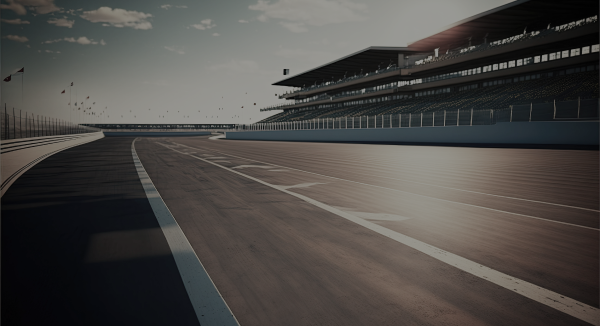


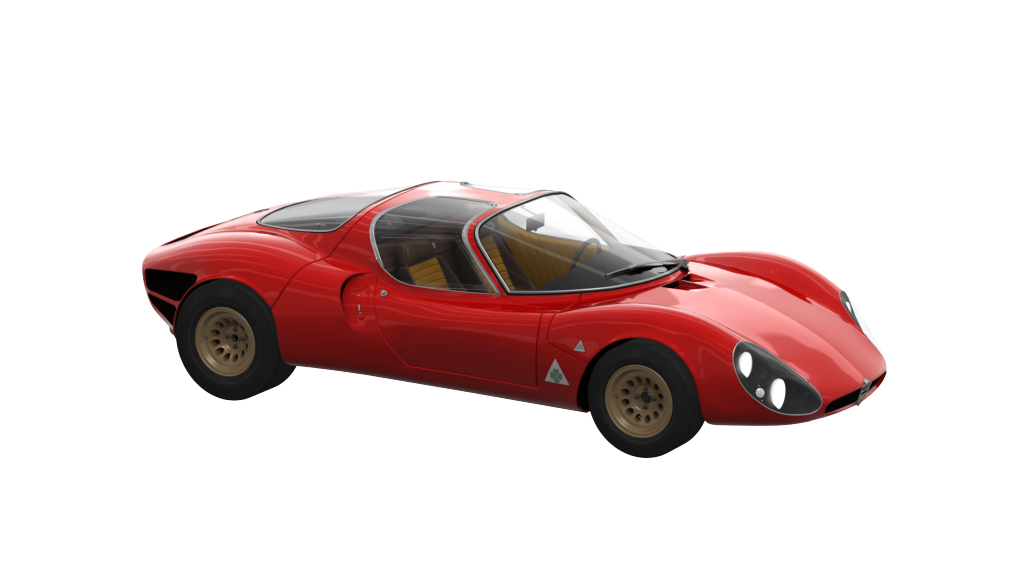
The Alfa 33 Stradale made its official debut at the 1968 Turin Motor Show. Designed by Franco Scaglione, it was then assembled by Carrozzeria Marazzi. What makes it so exclusive is not only its limited edition of 18 examples, but also because it is the first production car with vertically opening doors and it derives directly from the Alfa Tipo 33, a racing car that competed in the World Sport Prototypes Championship under the Autodelta team banner. Its line sculpted by the wind make it a true work of art in motion, driven by superlative mechanics and a 2.0-litre naturally aspirated V8 engine, built entirely in aluminium and magnesium, designed by the engineer Busso, capable of delivering 230 HP. Its choice among the eClassic cars is due to the combination of undisputed beauty and harmony with a strong sporty DNA. Excellent for getting used to the track and its contingencies. Today, it is one of the most sought-after Alfas and appreciated by the world's greatest collectors.
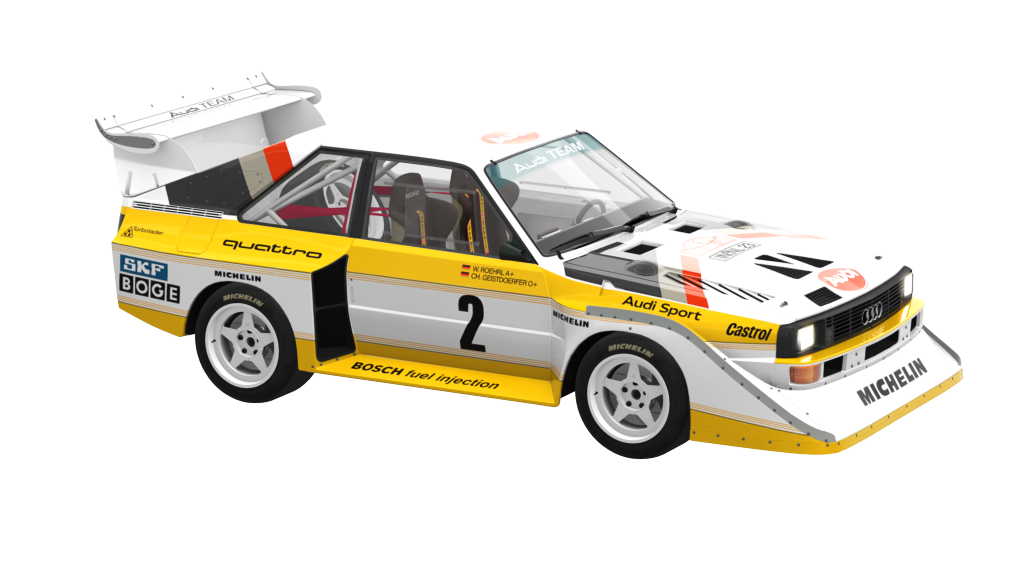
The Audi Quattro has an innovative and disruptive ring to its name. With is all wheel drive system, it changed the historic course of Rally racing, and just a few years later also for road-legal production cars. The Audi Quattro Sport S1 was introduced just three years after the Audi Quattro was born. Apart from its huge overhangs and large rear wing which created a monster-like look, the Audi Quattro Sport S1 also featured early experimental versions of automatic dual clutch gearboxes which inspired today's direct-shift-gearbox or Porsche's Doppelkupplung. Audi Sport Quattro was a fantastic innovation for racing and road cars, carrying legends like Walter Röhrl, Stig Blomqvist, Bobby Unser and others.

The development of the racing version of the BMW M3 E30 began in 1986 under the direction of Paul Rosche, the father of the M12 Turbo engine that powered Piquet's Brabham to victory in the F1 World Championship in 1983. To satisfy Group A regulations, the development and homologation required the car to be derived from a road-going car, which is why the Motorsport division decided to choose the youngest and most compact car in the range as a starting point, the E30 2-door saloon, and gave it a thorough workover: a revised chassis, enlarged track, broader fenders and various changes to the bodywork, including the addition of a striking wing, and of course a racing engine. The four-cylinder, 2,302cc S14 engine that produced about 300hp (200hp in the road-going version) was preferred to the six-cylinder alternative in order to save weight and because of its higher 9,000 rpm rev limit. Its debut in the DTM 1987 series was an immediate success with Eric van de Poele winning the championship, a victory repeated two years later with Roberto Ravaglia. The M3 E30 isone of the key symbols of BMW’s sporting history and is easily recognizable with its Warsteiner livery.
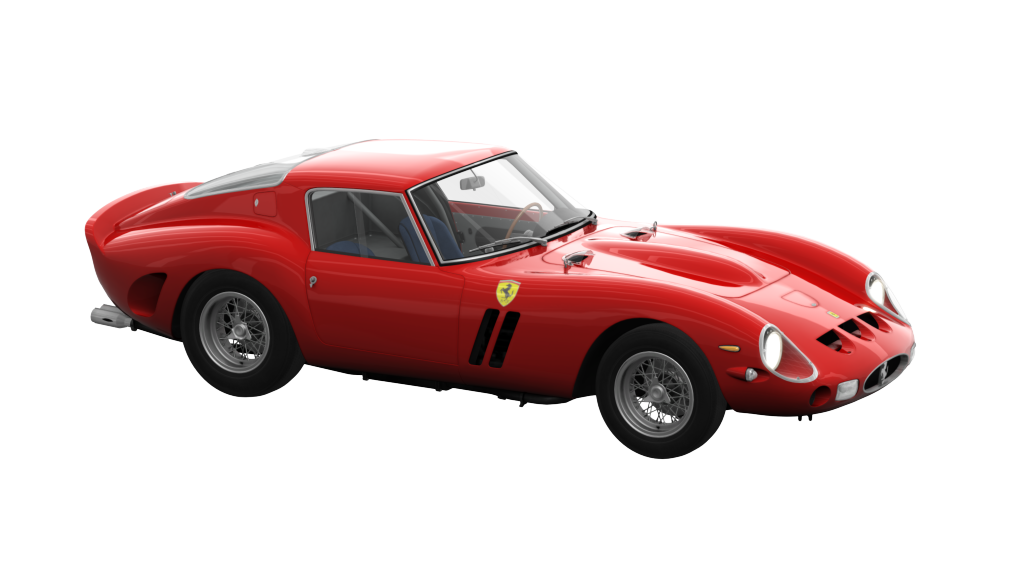
The GTO was presented on February ’62 in Maranello at the usual pre-season Press conference. At the express request of Enzo Ferrari, it was born with the sole objective of racing (or rather, winning) in the FIA Gt Group 3 Championship. The full name stands for: 250, like the cubic centimetres of each of the twelve cylinders, GT for Gran Turismo and O for Omologata. The development of the 250 GTO was headed firstly by chief engineer Giotto Bizzarrini, who was then replaced by a young Mario Forghieri. Sergio Scaglietti designed and build the body of the car. The chassis was that of the Ferrari 250 SWB, with its supports duly modified and reinforced with metal crossbars, while the engine was the 3.0 V12 of the 250 TR, which had already won at Le Mans, mounted further back and lower than the original. His racing debut came at the ’62 12h of Sebring, where Hill and Gendebien finished 2nd overall. It then became world champion in its category in ’62, ’63 and ’64, allowing victories to many drivers of the time on almost every circuit in the world. It’s today the most valuable car in the collectors’ world and considered to be the “Monna Lisa” of the car world.

The F40 was revealed on 21 July 1987 in Maranello. It was created to celebrate the 40th. Anniversary of the brand and it’s the last car done by Enzo Ferrari before his death. It’s a two-seater high-performance sports sedan, powered by a 3L V8 engine, supercharged by two IHI turbochargers with intercooler, positioned in a central position. The chassis uses tubular alloy steel elements, integrated with sandwich structure cells in carbon fibre, Kevlar and Nomex honeycomb. The bodywork is in like with the car's distinctly sporty spirit and sophisticated mechanics, and its design is unmistakably Pininfarina. Studied in the wind tunnel, it has significant downforce for perfect road adherence. The aerodynamics have given the car an exasperatingly racing look. The imposing rear wing (in carbon), which extends across the entire width of the tail, is designed to ensure that the rear end is flattened. The F40, with its short wheelbase and brutal 478 horsepower from its two turbochargers, has to be driven with great care to be in full control. It is today highly appreciated by collectors and often a protagonist in classic car auctions worldwide.
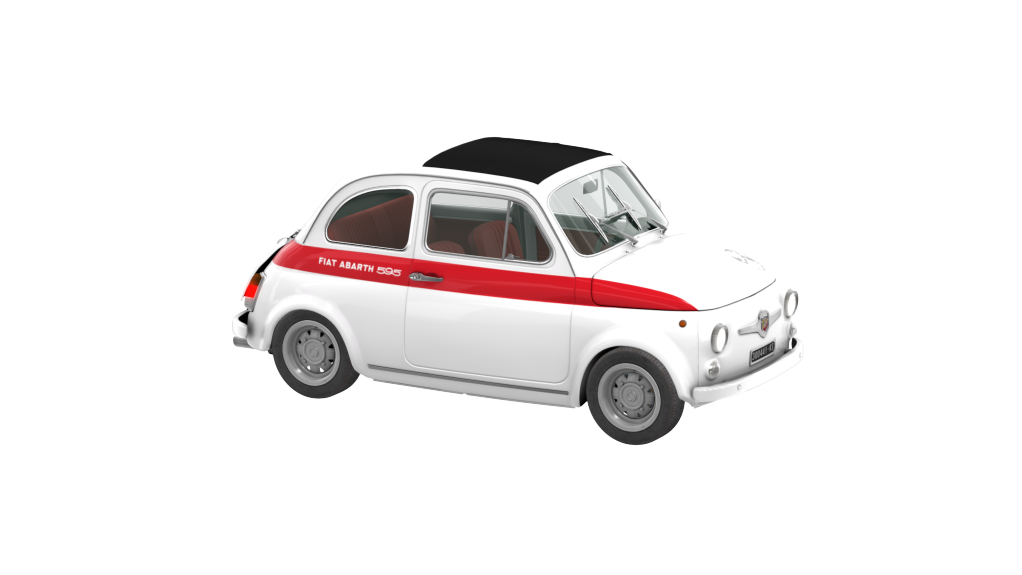
The 550 Abarth rolled off the assembly line in ’63: based on the standard 500d Fiat, the small twin-cylinder sports car was christened the “595” (593 cc displacement). Fiat supplied Abarth with semi-complete cars, where the missing custom parts were then fitted, such as the dashboard, new carburettors, 3-spoke steering wheel, aluminium oil pan, intake, exhaust systems, wider wheels and tires, some discrete Abarth branding and bumper for extra cooling for the rear-mounted engine. The combined result improved the handling and doubled the horsepower. It broke six international records in its first year using a special aerodynamic bodywork. The production car, in a race-prepared 595 Abarth version, was very popular in amateur track and hillclimb racing. Despite its low power, if driven smoothly, it gave excellent performance and was a perfect car for those who wanted to start racing. It is featured among the eClassic cars because it shows how, in those days, in the absence of karts, the gateway to competition was the small, fun utility cars prepared for races. In recent years, the values of this car have risen considerably and today an original 595 is a highly sought-after piece for collectors of sports cars.
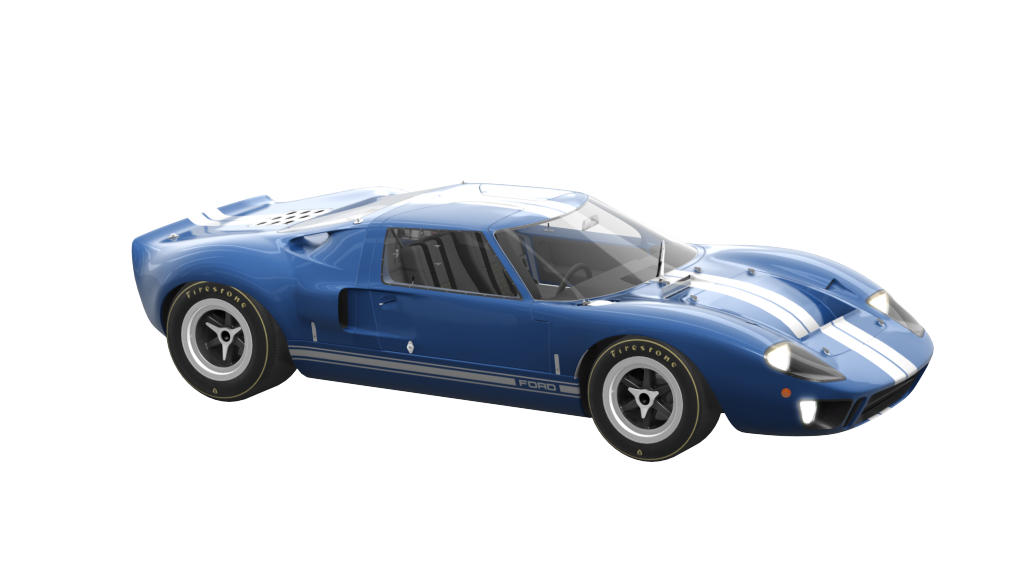
The GT40 was launched in 1964 by Ford with the declared aim of winning the 24 Hours of Le Mans. It first raced in May ’64 at the Nürburgring 1000 km. Ford’s chief engineer, Roy Lunn, came up with the idea of a two-seater sport car with a low-slung, shark-like body and a powerful V-8 engine located between the axles. The body is 156 inches long and 40 inches high, that’s why it’s called GT40. It was one of the first prototype sports cars to fully benefit from a mid-engine design, most notably a smooth aerodynamic shape and great handling characteristics. After a series of initial setbacks and racing failures, the racing program was assigned to Carroll Shelby. With a newly developed and enhanced version of the car, called MKII, GT40 finally broke Ferrari's Le Mans streak in 1966 and went on to win the next three annual races. It is one of the most wanted 1960s sports cars and now also often protagonist of various concours d’elegance around the world.
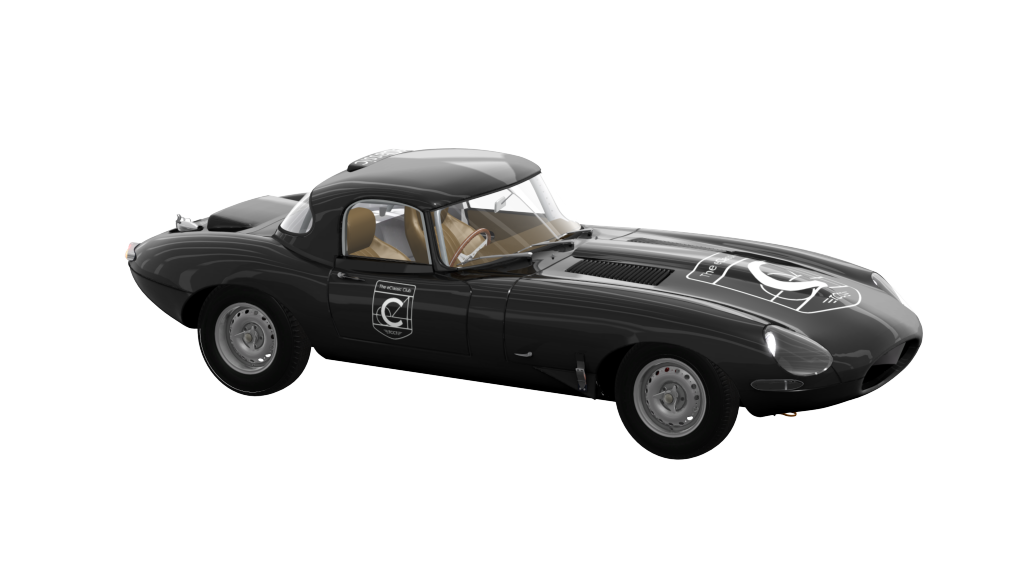
Jaguar built the Lightweight E-Type Competition Roadster as a follow up to the hugely dominant D-Type, which claimed victory at the famed Le Mans 24 Hours three years consecutively. These Lightweights featured revised bodywork, which was manufactured from aluminium instead of the standard steel E-Type panels, and fitted with a race-tuned aluminium block with a ‘wide-angle’ cylinder head and a Lucas fuel-injected, 3.8-litre, straight six-cylinder engine, which could produce in excess of 300 bhp, For the standard road-going E-Type, Jaguar chose to fit a steel body to reduce costs, allowing the car to be more accessible to a larger audience and leading to increased sales. It was important for Jaguar that the E-Type road car was a success; however, when the car took to the circuit, the steel proved to be too heavy, especially when the car was lined up next to the aluminium-bodied Ferrari 250 GTO, Aston Martin DB4 GT Zagato and Shelby Daytona Coupes. For the competition-focused Lightweight E-Type, Jaguar built a special aluminium monocoque with aluminium doors, bonnet and boot lid, making the car an impressive 250 lb lighter than the road car and, importantly, 100 lb lighter than its Italian rival, the Ferrari 250 GTO. To increase rigidity further, Jaguar fitted steel reinforcements in several locations, along with an aluminium hardtop, which also gave the car a fabulous, low, sleek and purposeful look.
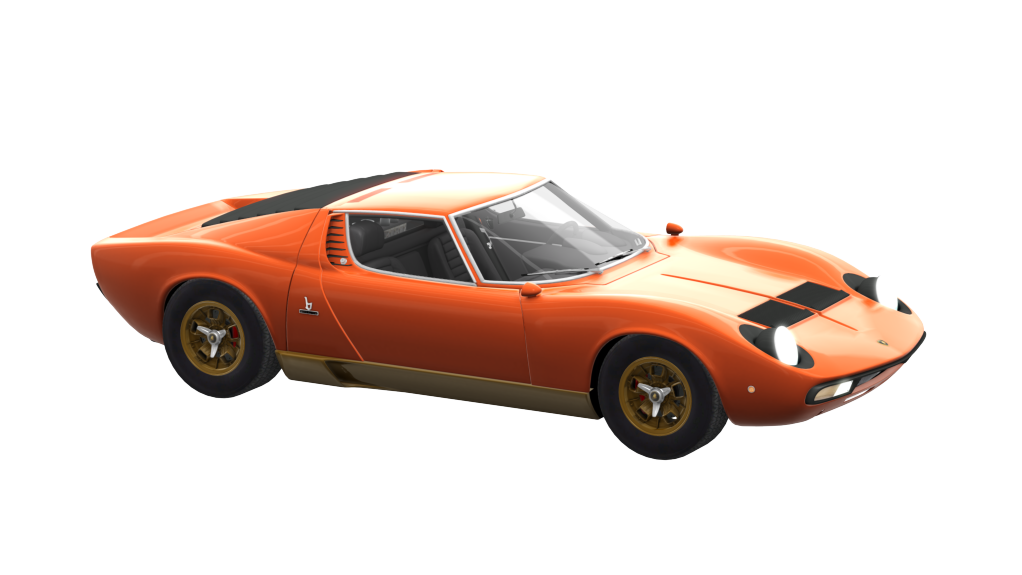
Unveiled at the ’66 Geneva Motor Show, the Miura was an unprecedented success. The car took the visitors' breath away and instantly aged all supercars of the time, ushering in a new era in sports cars. One year before Lamborghini presented a box-form chassis named TP400 (after the position of the engine and its displacement). The engine and suspension already fitted to the 400 GT were installed with a few modifications. The project was the brainchild of engineers Dallara and Stanzani, who, aware of Lamborghini's aversion to racing, used the mid-engine layout of some of the competition cars of the time, such as the Ferrari 250 LM or Ford GT40. On these cars, the engine was in a longitudinal position, while Lamborghini's engine was mounted transversely between the cockpit and the rear axle, a solution that reduced the overall dimensions and obtained a better weight distribution. It was designed by Gandini for Bertone. Ferruccio Lamborghini, who was born under the sign of the bull, chose the name Miura to honour the fighting bull breeder Don Miura. Although a racing version, the Jota, was made, Ferruccio did not want the car to race even though it would certainly have been competitive. In recent years, it has become an icon for collectors.
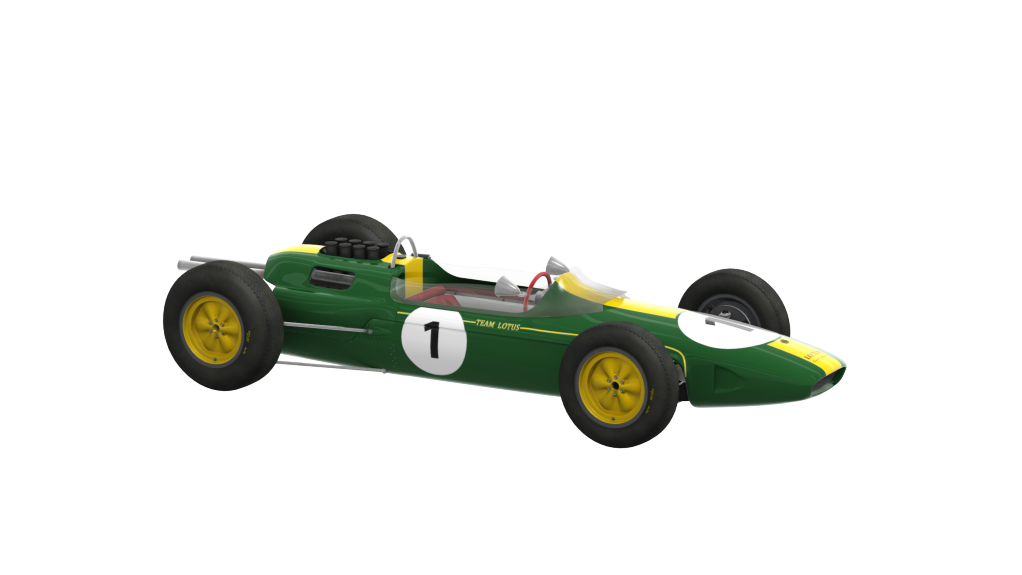
The Lotus 25 was a racing car designed by Colin Chapman for the 1962 Formula One season. The revolutionary fully stressed monocoque made the car more rigid and structurally stronger than typical F1 cars of the period. This was three times stiffer than the Lotus 24, while the chassis weighed only half as much. The car also was extremely low and narrow, with a smaller frontal area and was nicknamed The Bathtub since the driver has to sit reclined behind the wheel. In the hands of Jim Clark it took 14 World Championship Grand Prix wins and propelled him to his 1963 World Championship title.
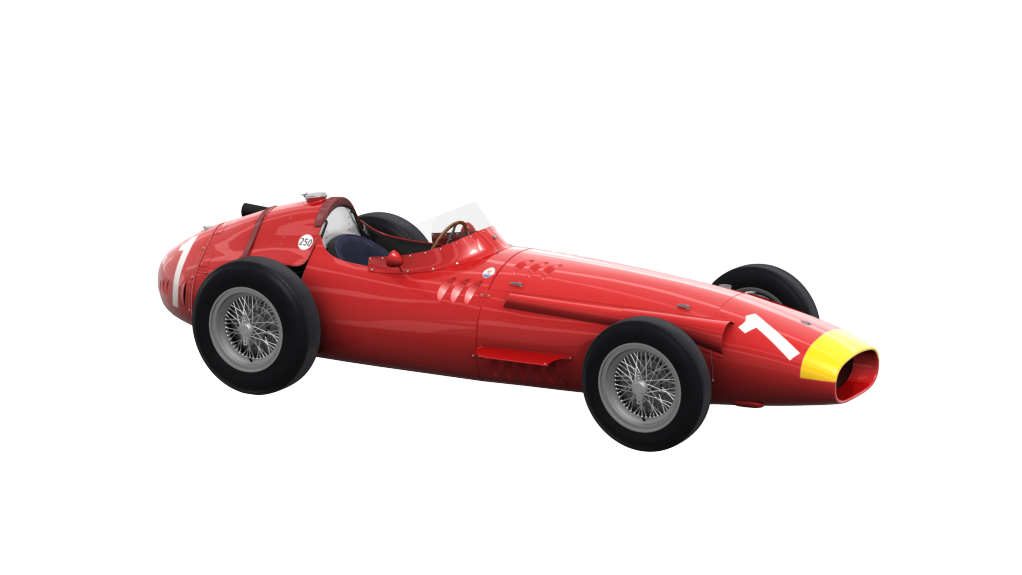
The 250F is a F1 car designed by Gioacchino Colombo to compete in the ’54 season. The engine, also designed by Colombo, is a 2.5L in-line 6-cylinder capable of producing up to 320 Hp. 250 F stands for 2.5 litres (250) and F for Formula. The 4-speed gearbox coupled to the differential is located on the rear axle to improve weight distribution. To lower the centre of gravity, the drive shaft passes to the side of the rider, while the chassis is a tubular steel type. The aluminum bodywork, designed by Fantuzzi, is both functional and elegant, with the fuel tank forming the tail of the car and a capacity of 200 L. The race debut took place at the ’54 Argentina GP where Fangio won. The Argentine also won in Belgium, before moving to Mercedes. Due to its efficiency and simplicity, it was used by both official and private teams, achieving victories also with Moss, such as the Monte Carlo and Monza GPs. ’57 was the high point of the 250F's career when Fangio won the world championship with four victories including a legendary win in Nurburgring. A 12-cylinder engine was also tested on the 250, but with very limited use. It is today one of the rarest and most wanted racing cars in the collectors’ scene.
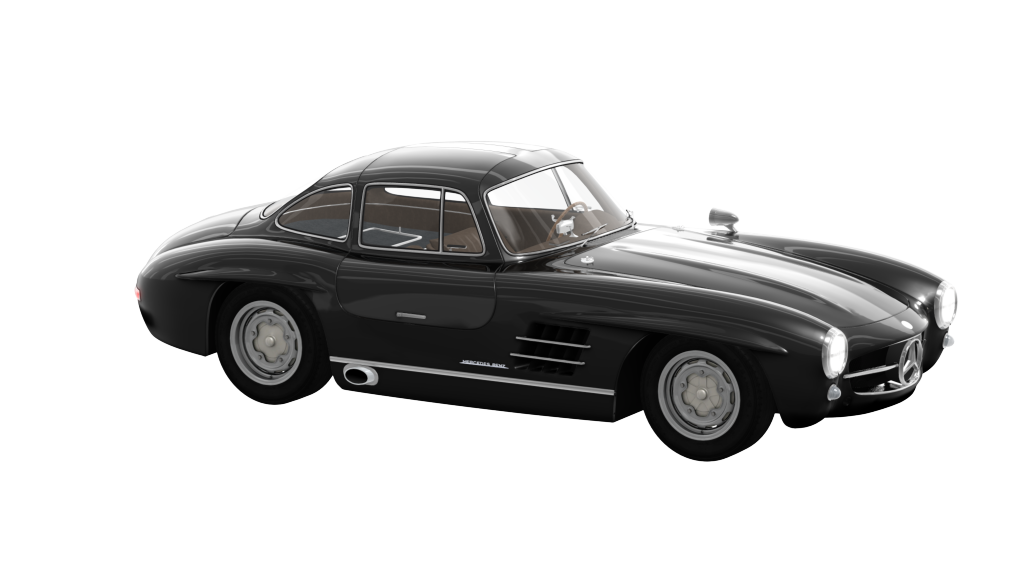
The Car was the first iteration of the SL-Class grand tourer and fastest production car of its day. Introduced in 1954 as a two-seat coupé with distinctive gull-wing doors, it was later offered as an open roadster. The idea of a toned-down Gran Prix car tailored to affluent performance enthusiasts in the booming post-war American market was suggested by Max Hoffman. Mercedes accepted the gamble and the new 300 SL-300 for its 3.0 litre engine displacement and SL for Sport Leicht (Sport Light)-was introduced at the 1954 New York Auto Show rather than the Frankfurt or Geneva gatherings company models made their usual debuts. Immediately successful and today iconic, the 300 SL stood alone with its distinctive doors, first-ever production fuel-injection, and world's fastest top speed. The original coupé was available from March 1955 to 1957, the roadster from 1957 to 1963.
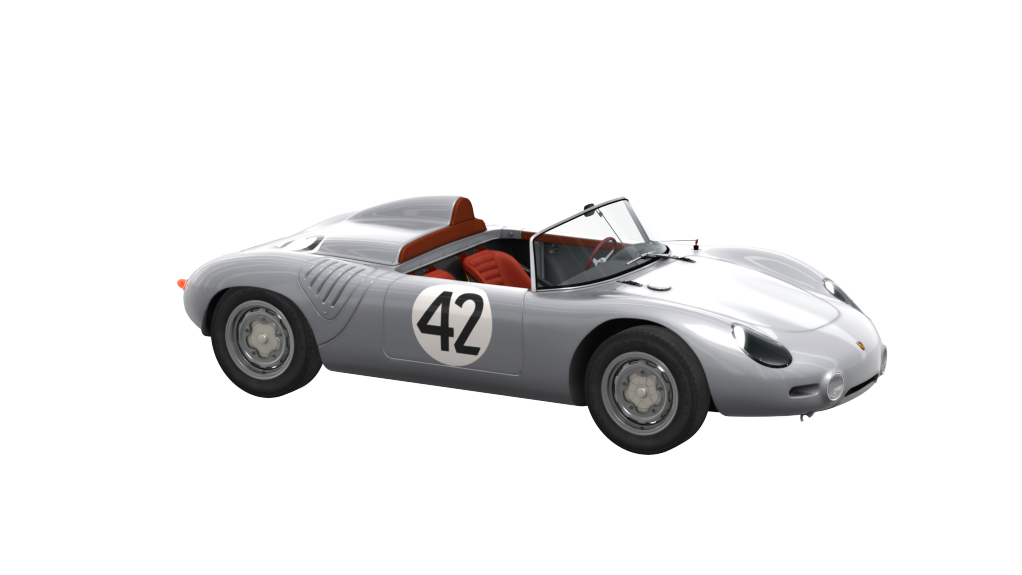
The 718 was a development of the successful Porsche 550A to race in the 1957 World Sports Car Championship. The design was both lower and smoother than that of its predecessors. Under the aluminium body there were several changes. The front trailing arms were relocated to enhance suspension dynamics; the camber of the front wheels would now increase as the wheels moved upwards. The changes required the steering box to be mounted in the middle of the car. The internal name for the new car was the Type 718. The car's first race was Le Mans, where it was forced to retire after 10 hours as the result of an accident. At the Targa Florio Jean Behra impressed by finishing second overall in a 1.5 litre engined RSK. At Le Mans Jurgen Barth and Paul Frere placed a 1.5 litre RSK fourth overall and first in class. Jean Behra and Hans Herrmann did one better taking third and first in the 2 litre class. Now completely refined, the RSK was even more successful in 1959 with an overal win at the Targa Florio and a podium finish at the Sebring 12 Hours.
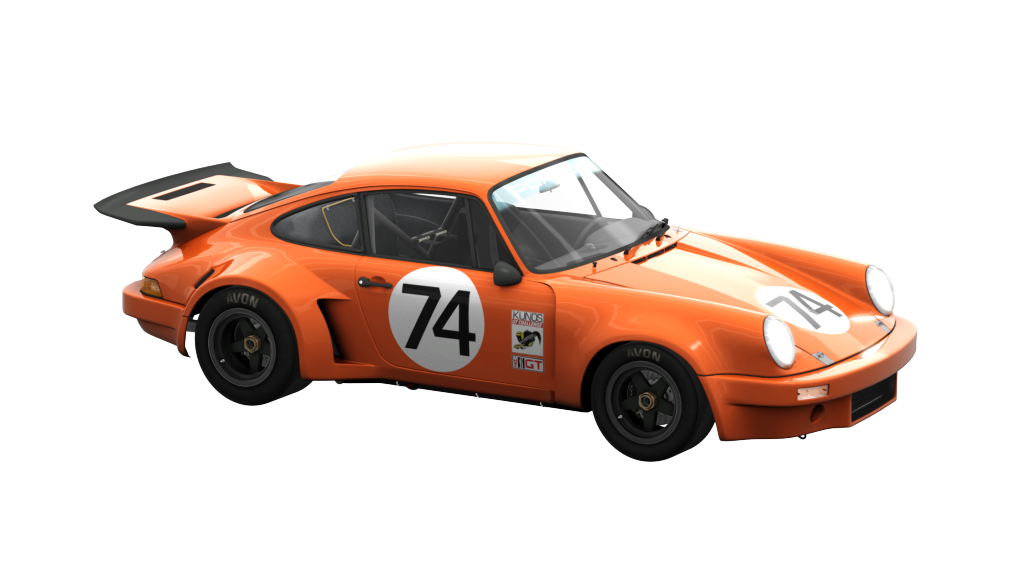
In 1973 Porsche introduced the 911 Carrera RSR to compete in the World Sports Car Championship. It used the 911 production car as a base. For homologation purposes, the road going 911 Carrera RS 2.7 was also created. Porsche wanted the new GT car to be campaigned by privateers, but eight pre-production prototypes were also raced in select rounds of the World Championship by the works drivers. In addition to the works team, customers like Brumos and Penske racing teams were also entrusted with these cars. The early RSR competition cars featured a 2.8 litre version of the regular production 911 engine. The flat six was developed for competition use and featured twin-spark ignition, larger intake and exhaust ports, more aggressive camshafts and Bosch fuel injection. This air-cooled engine produced an impressive 308 bhp. The debut was at the ’73 24 Hours of Daytona, where drivers Peter Gregg and Hurley Haywood of the Brumos team took overall victory. The car proved to be extremely successful and also won in the same year the Targa Florio and the 12 Hours of Sebring. The RSR is one of the rarest and most valuable competition Porsches in the collectors car market.
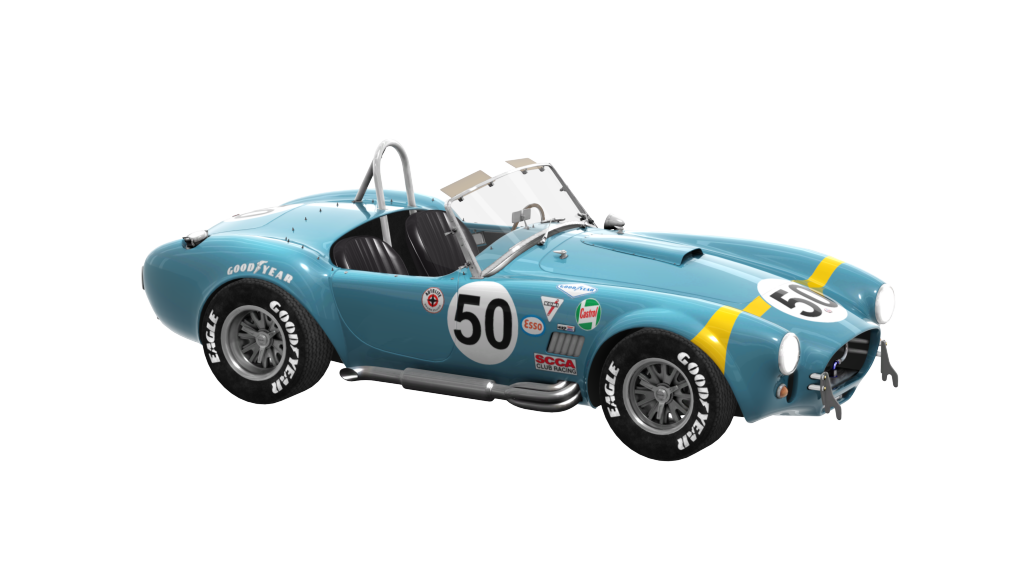
Carroll Shelby created the Cobra with the help and technical support of Ford, who liked the idea of offering a sports car that could win the World Manufacturer’s GT Championship dominated by Ferrari since its inception. So in 1962, Shelby establishes Shelby American in California. The first Cobra is launched at the '62 New York Auto Show. Equipped with the Ford 260 and later the 289 cubic-inch engines, the Cobra proved to be a success on racetracks worldwide: a winning mix of lightweight body, less than 1000kg, small dimensions and brute US power proved to be revolutionary. In 1964, Shelby started working on Shelby Cobra 427, an even more extreme version powered by a monstrous Ford big block 7 litre engine with around 450 bhp and over 600 Nm of torque. It was astonishingly fast even by today’s standards. The 0 to 60 mph time was just over 4 seconds In July ’65, the Cobra finally wins (in roadster and coupe form) the World Manufacturers’ GT Championship, as the team soundly defeated Ferrari. Shelby is the only US auto manufacturer to win the championship, before or since. Today, it still is one of most desirable sports cars for every car collector.


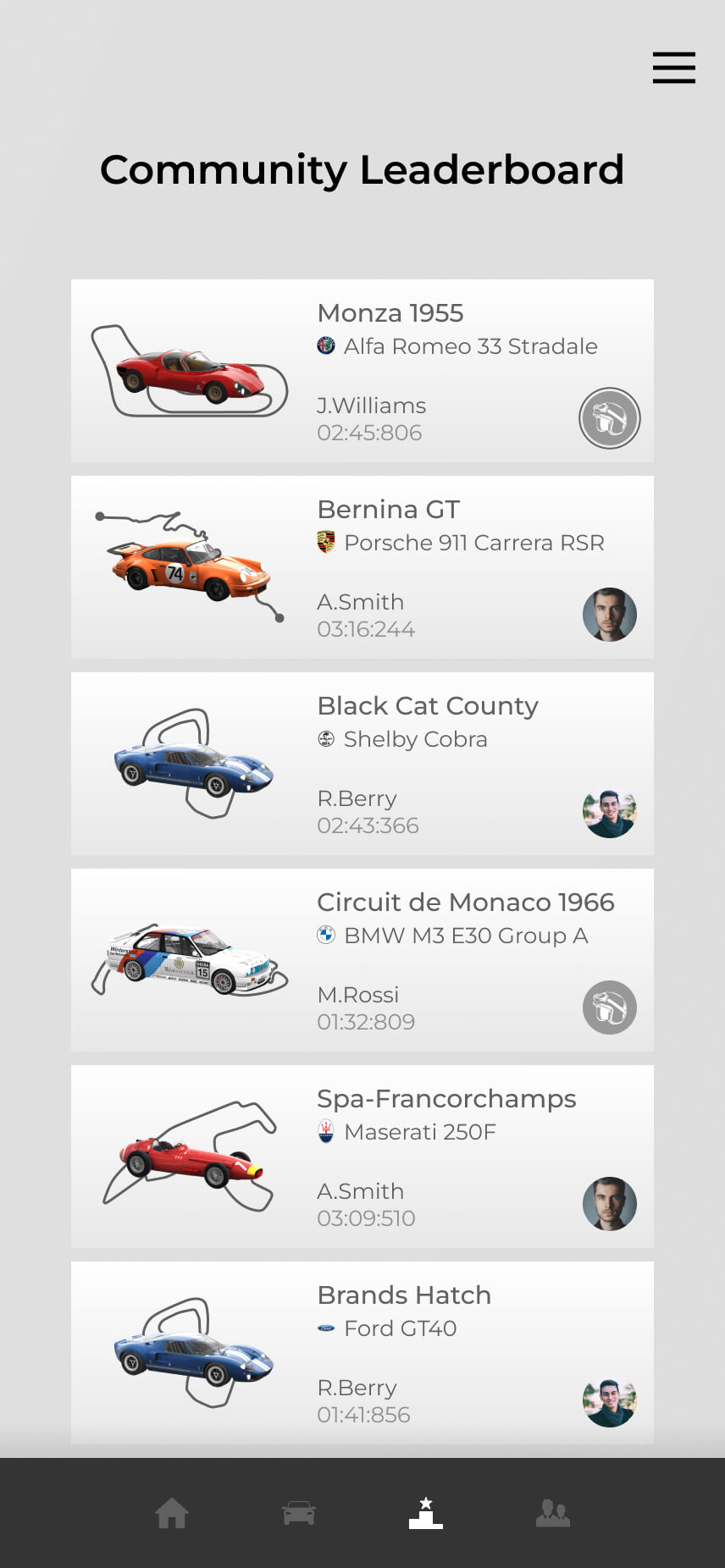
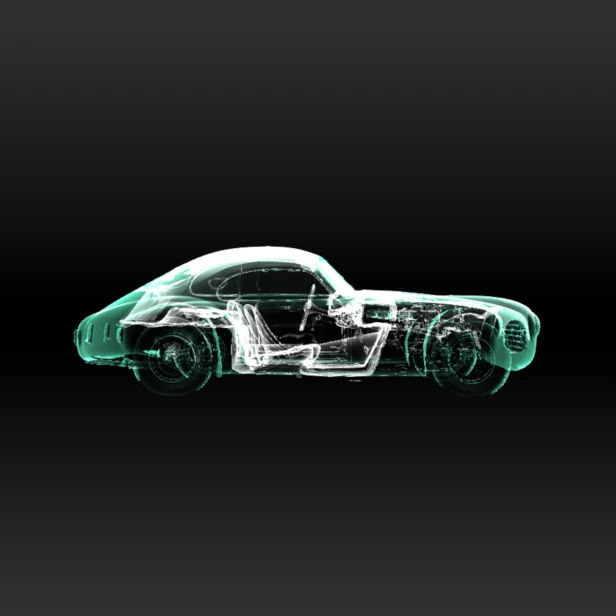
Virtualize your car with us and create an exact digital twin of your classic car. Your digital twin can then live in Roarington and beyond. Whether in 3D showrooms, or on the Roarington Simulators, give a virtual life to your beloved classic car.